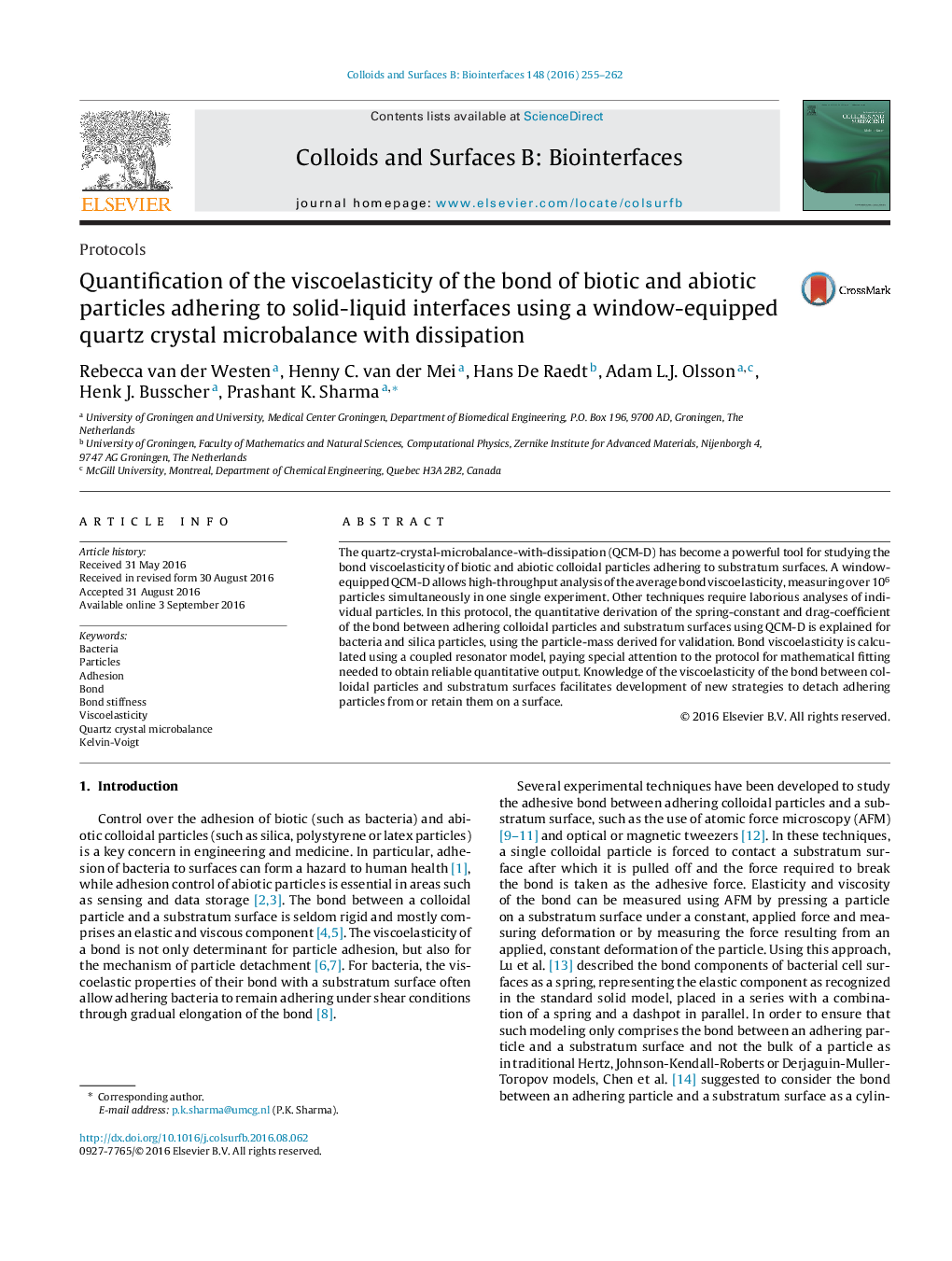| Article ID | Journal | Published Year | Pages | File Type |
|---|---|---|---|---|
| 4983467 | Colloids and Surfaces B: Biointerfaces | 2016 | 8 Pages |
â¢Crucial steps are provided for viscoelasticity quantification of particle bonds with QCM-D.â¢A coupled resonator model for QCM-D data analysis is explained involving particle adhesion.â¢QCM-D responses to abiotic and biotic (bacteria) particle adhesion are compared.â¢A computer program for analysis of a coupled resonance in QCM-D is provided.
The quartz-crystal-microbalance-with-dissipation (QCM-D) has become a powerful tool for studying the bond viscoelasticity of biotic and abiotic colloidal particles adhering to substratum surfaces. A window-equipped QCM-D allows high-throughput analysis of the average bond viscoelasticity, measuring over 106 particles simultaneously in one single experiment. Other techniques require laborious analyses of individual particles. In this protocol, the quantitative derivation of the spring-constant and drag-coefficient of the bond between adhering colloidal particles and substratum surfaces using QCM-D is explained for bacteria and silica particles, using the particle-mass derived for validation. Bond viscoelasticity is calculated using a coupled resonator model, paying special attention to the protocol for mathematical fitting needed to obtain reliable quantitative output. Knowledge of the viscoelasticity of the bond between colloidal particles and substratum surfaces facilitates development of new strategies to detach adhering particles from or retain them on a surface.
Graphical abstractDownload high-res image (54KB)Download full-size image
